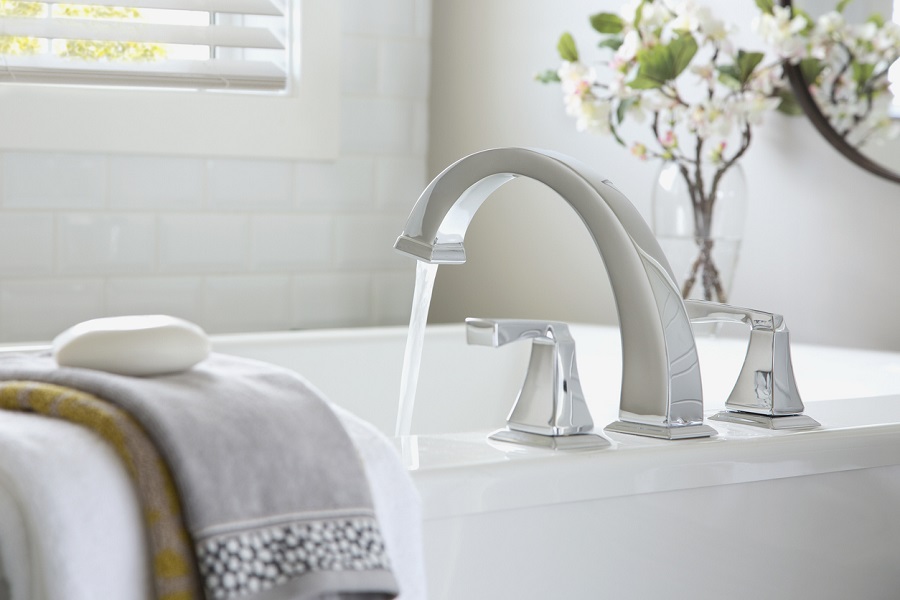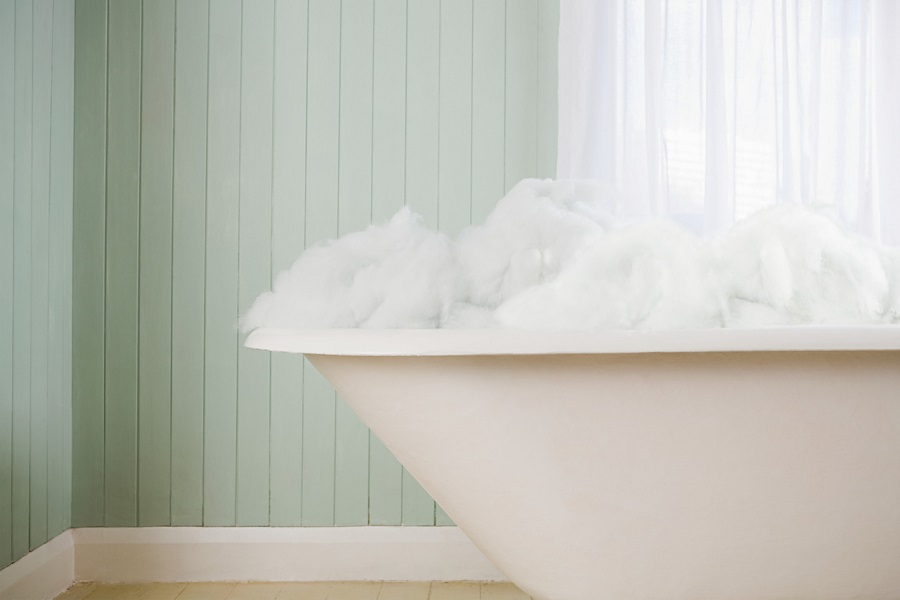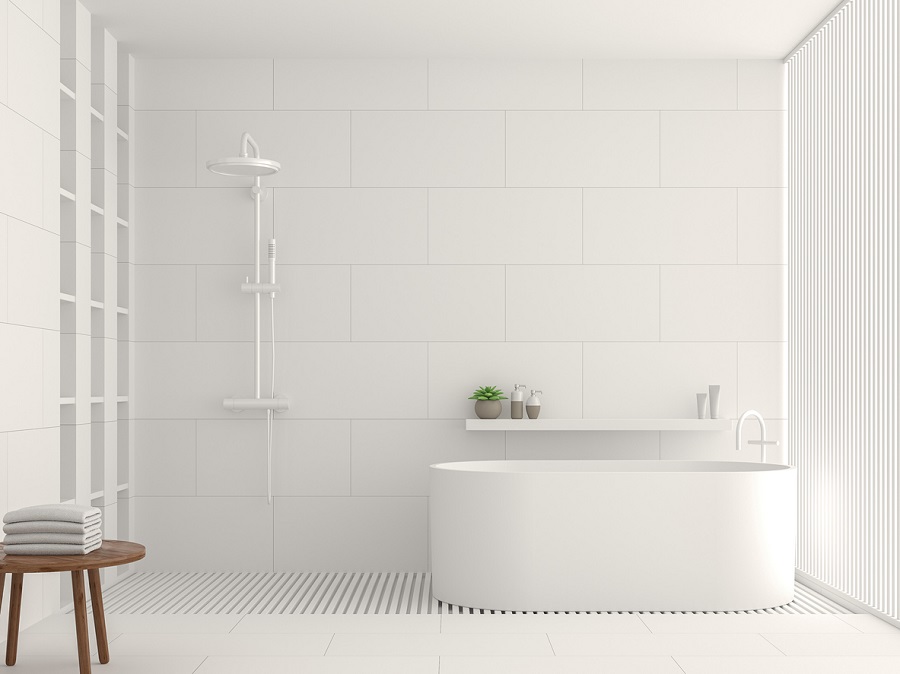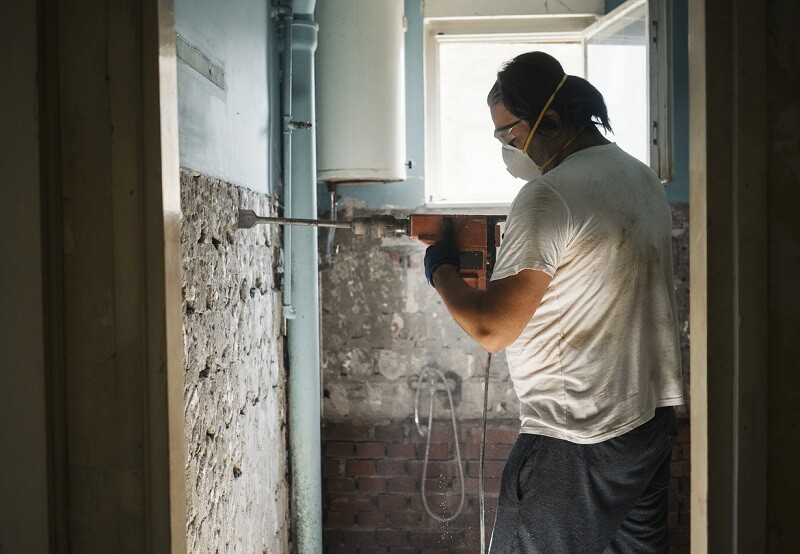
20 Must-Have Luxury Bathroom Accessories
Meta: Luxury bathroom accessories can transform an ordinary space into something truly special. These bathroom accessories can spark the luxury
The holidays are a time of merriment and celebration, but they are also a time where the weather is less than desirable. A perfect solution to the cold winter weather is of course a nice warm bath, and with just a few tips, you can easily keep your bath nice and toasty without keeping your water running.

The first and perhaps most integral part of keeping your bathtub warm is the material it’s made from. Bathtub materials stretch a wide spectrum differing in aesthetics, weight and pricing, but ultimately, the most important role they serve is heat retention. Some material such as fiberglass and acrylic have middling heat retention whereas others such as stone resin have excellent heat retention. Of course price is often reflected in this and the material with higher heat retention will always cost more, but ultimately, you get what you pay for and heat retention is among the top things you should consider when choosing material for your bathtub. The better heat retention your material has, the longer your bath remains warm and the more enjoyable your experience will be.
Similar to your bathtub materials, the insulation in your bathtub is equally important. Insulation refers to the distance between the walls of your bathroom and your bathtub. A typical shower enclosure-that is three adjacent walls, will do an excellent job of trapping moisture and warmth for your bath, so for most people, your insulation is not really a high concern as your bathroom is already set up to trap heat. If you have a freestanding bathtub however, your insulation will be poor as your bathtub will be mostly exposed to the outside weather and therefore you need to rely on the material of your bathtub to retain heat or perhaps install your bathtub near a wall surround so that the surrounding heat and steam will be trapped better, extending the period of time before your water grows cold.
Another solution to keeping your bathtub warm is preheating your bathtub with a much higher temperature than you are accustomed to. Since filling your bathtub will take several minutes, having your water at a higher temperature means that by the time your bath is ready, the water will have cooled off to your normal temperature, thus extending the time before your bath grows cold. Of course the rate at which your bath cools off with also depends largely on the material of your tub as well as the location of your bathtub. When you take a bath without preheating, the heat from the water will be retained by the icy tub surface, leaving you with chattering teeth far too quickly.

In addition to being a very enjoyable pass time, a bubble bath actually helps keep your water temperature insulated due to the foam from the bubbles themselves. This means that with more bubbles in your bath your water temperature will remain warmer for longer periods of time provided you have enough bubble foam on the surface. The foam also helps to keep residue and deposits from reaching the bottom of the tub itself, making it cleaner in the long term.
For a more therapeutic approach to warming your bath, there are hot stones. Hot stones are made of any number of volcanic rock, commonly basalt, which are then heated before being added to your bath. This provides your bath with a surge of warmth and can even aid in providing a more therapeutic soak similar to how a hot tub or jacuzzi functions. The added warmth of the hot stone helps your skin in addition to keeping your bath high, but be warned that high quality bath stones do tend to be a bit pricey.
Very popular in Japan, bath covers provide a heat trap for one side of your bathtub while you soak. The result is less surface area for the heat to escape from, meaning that your water remains warmer for much longer without any additional elements such as hot stones or bubble foam. These bath covers are made in a variety of materials, most commonly wood, but there are some ivory variants as well for sale. Simply place them over your bathtub and immediately notice the difference in temperature levels.
A tip that everyone can easily follow, keeping the bathroom door closed is not only beneficial for your privacy, but helps to keep your bathroom from losing any heat that it has built up. Steam is actually a great heat dispersant, meaning that the more steam that is built up in your bathroom, the warmer the air will be. An open door can easily allow cold air in, so it is important to keep your door closed when taking a bath to ensure proper heat accumulation.

The final tip is one that should be used with caution as electrical appliances near the bathtub are not a good idea. If it can be kept from you at a safe distance, a portable space heater can also help to keep you warm during a nice relaxing soak. Just keep in mind that your heater should be kept at a safe distance away from any water to avoid any potential injury.
If you find that your baths tend to err on the cold side of things, consider the many options above to keep your baths nice and relaxing and above all, exercise caution in using electrical appliances near your bathtub.
You should use a shower curtain or bath door to retain the heat in your bath so that it stays hot for an extended period of time. Make sure the bathroom door is closed and the shower curtain or panel is drawn all the way across.
This effectively creates a tighter compartment and traps the warm water, allowing it to stay warm for a little while longer.
Even while all the solutions from above can help keep your bath warm for an extended period of time, if you prefer taking longer dips, an hour or more, the water will eventually start to cool down. Regretfully, none of the strategies we’ve discussed can totally halt that normal process.
At that point, you can go back to adding hot water to your bath. There are two ways to do this: either add fresh water and drain some of the existing water, or add a small amount of hot water and swish it around your bath every ten minutes to maintain the desired temperature.
We should all spend more time taking baths to ease our hurting muscles, relax after a hectic day, or enjoy a mindful activity this way. Baths are a simple thing, but nothing is more frustrating or upsetting than finding out that the bathwater becomes colder sooner than you anticipated—especially if you take long baths.
We hope that we’ve helped you with these tips and that from now on, your baths will be longer, and warmer and will truly serve to relax you after a long, stressful day.

Eric is the founder and president of Badeloft USA. He has been the president of Badeloft’s US division for over ten years and oversees all marketing and branding aspects of Badeloftusa.com.
His expertise lies in small business development, sales, and home and bathroom industry trends and information.
Contact us with any business related inquiries.

Free material samples and tub templates

Meta: Luxury bathroom accessories can transform an ordinary space into something truly special. These bathroom accessories can spark the luxury

Who doesn’t want a luxurious bathroom? Bathrooms are necessary for any home, so make the space your own with upscale

Shopping for a home is one of life’s most exciting yet daunting milestones. Before diving into the housing market, it’s

A bathroom remodel can be a fantastic way to upgrade your home, but it can be quite a lengthy and
Fill out the form below to request a free material sample
"*" indicates required fields
"*" indicates required fields